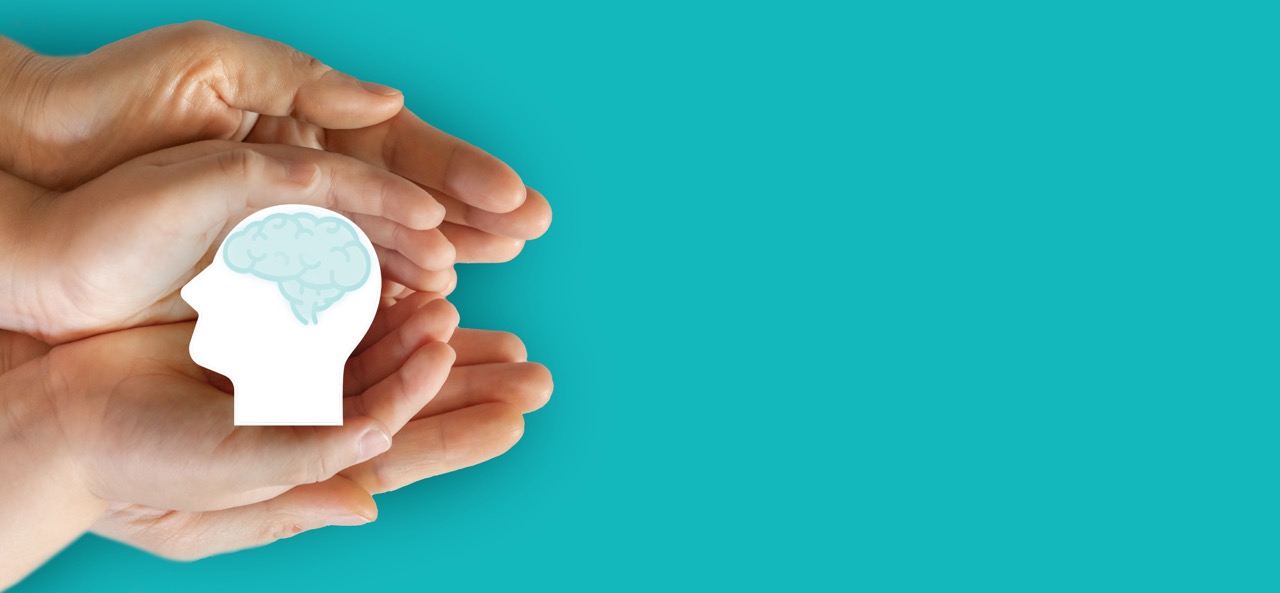Impulsivity in Bulimia Nervosa
Bulimia nervosa, or bulimia, is an eating disorder characterized by episodes of binge eating, where a person rapidly consumes large amounts of food with a sense of lost control, followed by compensatory behaviors like vomiting, excessive exercise, or fasting to prevent weight gain. Many also struggle with impulse control, engaging in compulsive stealing, substance abuse, gambling, or reckless decisions. These actions are typically driven by an overwhelming urge that feels impossible to resist.

Recognizing Impulsive Patterns in Bulimia
Breaking free from impulsive behaviors begins with recognizing their patterns. Many people with bulimia struggle with more than just food-related behaviors, often engaging in compulsive lying, excessive social media use, or risky decision-making. [1] These behaviors tend to emerge in response to stress, emotional distress, or boredom, creating a cycle that feels difficult to escape.
A helpful way to understand these impulses is by tracking triggers and emotions. Journaling can reveal patterns in when and why these urges arise, whether after a stressful event, a conflict, or moments of self-doubt. Recognizing these triggers shifts the focus from reacting to behaviors to addressing their root causes, paving the way for healthier coping strategies.
Secrecy and Shame
Secrecy reinforces impulsive behaviors, making them harder to break. Many people with bulimia go to great lengths to hide their bingeing and purging, often extending this secrecy to other actions. [2] While purging is often tied to deep shame, impulsive behaviors like excessive spending or constantly seeking online validation can feel less harmful, making them easier to justify and harder to recognize as part of a deeper struggle.
This rationalization creates a false sense of control, allowing these behaviors to persist unchecked. Secrecy strengthens these patterns, making them more difficult to stop. [3] Over time, isolation deepens, making it even harder to seek help. What may seem like a way to maintain control instead strengthens the grip these behaviors have, making them even harder to break.
Breaking the cycle starts with breaking the silence. Talking to a trusted friend, therapist, or support group can replace secrecy with understanding and lessen the burden of shame. Acknowledging struggles in a safe space helps people see that they are not alone and that their impulses do not define them. The more open someone is about their challenges, the easier it becomes to find support, develop healthier coping strategies, and regain control. [4]
Three ways to break the cycle of secrecy and shame:
- Share your struggles with a trusted person to reduce isolation and build support.
- Challenge justifications for impulsive behaviors by writing them down and reflecting on their impact.
- Seek professional or peer support through therapy or support groups to create accountability and self-acceptance.
Why Purging Feels Rewarding
Bulimia’s compulsive nature is deeply connected to the brain’s reward system. Purging, much like drug or alcohol use, triggers the release of endorphins and dopamine, creating a temporary sense of relief. [5] This brief emotional calm reinforces the behavior, making it increasingly difficult to resist future urges.
For someone struggling with bulimia, purging may provide an immediate release, much like how alcohol briefly soothes stress. However, this relief is short-lived and quickly replaced by guilt and self-reproach. The cycle of urge, relief, shame, and repetition fuels itself, making it feel impossible to escape.
Purging activates the same neural pathways as opioid use, conditioning the brain to seek it out as a coping mechanism. Even when someone wants to stop, the brain’s reinforcement makes it difficult. Breaking free requires retraining the brain to manage distress in healthier ways. [6]
One way to disrupt this cycle is by delaying the urge. When the impulse to purge arises, waiting just ten minutes before acting can weaken the pattern. Using this time for a grounding activity like walking, deep breathing, or listening to music can help shift focus away from the urge. Each time a person successfully delays purging, they reinforce self-control rather than compulsion. Over time, the brain adapts to healthier coping methods.
Retraining the brain:
- Use sensory grounding techniques like splashing cold water on your face or holding an ice cube to disrupt the urge.
- Engage your senses by focusing on a texture, scent, or sound to shift attention away from the compulsion.
The Paradox of Self-Medication
For many people with bulimia, impulsivity extends beyond food-related behaviors and into other forms of self-medication. Alcohol, social media, or reckless spending may seem like temporary escapes from emotional distress, but instead of providing relief, they often deepen the struggle.
For example, someone battling bulimia may turn to heavy drinking on weekends to numb the emotional toll of binge-purge cycles. At first, alcohol may seem like a way to quiet inner turmoil, but rather than easing distress, it intensifies it. The physical and emotional aftermath (hangovers, memory lapses, and regret) only heightens feelings of guilt and anxiety, making the cycle even harder to break.
Nearly half of people with eating disorders also struggle with addiction. [7] Both bulimia and substance abuse temporarily numb pain but ultimately worsen emotional distress. Recognizing this link shifts the focus from stopping harmful behaviors to addressing the emotions driving them.
Rather than replacing one destructive habit with another, individuals can develop healthier coping strategies. Mindfulness practices like meditation or deep breathing help regulate emotions, while activities like running or yoga provide a constructive outlet for stress. Creative pursuits such as writing, painting, or playing music allow for emotional expression instead of suppression. While building new habits takes time, each small step strengthens resilience and makes recovery more sustainable.
Healthy ways to cope:
- Practice mindfulness techniques such as meditation, deep breathing, or guided relaxation to regulate emotions.
- Engage in physical activities like running, yoga, or dancing to release stress in a constructive way.
- Explore creative outlets such as writing, painting, or playing music to process emotions without suppression.
Healing From Bulimia and Regaining Control
Recovery from bulimia often brings stability in other areas of life. As people regain control over their eating behaviors, their urges to engage in other impulsive actions tend to fade. True recovery goes beyond resisting impulses; it requires understanding and addressing the emotions that trigger them.
By identifying emotional triggers and developing healthier coping mechanisms, individuals can begin to break free from the cycle of impulsivity. With the right support, these changes become sustainable, leading to greater stability, self-control, and a renewed sense of confidence.
Cognitive-behavioral therapy (CBT) is one of the most effective treatments for bulimia, helping individuals recognize destructive thought patterns and replace them with healthier responses. Studies confirm that therapy addressing both emotional and behavioral aspects of bulimia improves long-term recovery, strengthening impulse control and lasting change.
For those struggling with both bulimia and impulsivity, seeking specialized help can be life-changing. Therapists trained in eating disorders can provide targeted strategies, while nutritionists help rebuild a balanced approach to food. Support groups offer community and encouragement, reinforcing that no one has to face recovery alone.
Steps toward lasting recovery:
- Seek support from professionals, support groups, or trusted friends and family.
- Identify triggers by journaling thoughts, emotions, and behaviors.
- Practice mindfulness through meditation, deep breathing, or grounding techniques.
- Develop alternative coping strategies like exercise, creative outlets, or social connection.
Building Balance and Empowerment
Understanding the connection between bulimia and impulsivity reveals an important truth. These behaviors are not a sign of weakness or lack of willpower but rather patterns rooted in emotional and neurological responses. By addressing both impulse control and disordered eating, individuals can break free from cycles that once felt impossible to escape.
Healing does not happen in isolation. It happens through connection with professionals, loved ones, and others who understand the struggle. As individuals regain control over their actions, they reclaim their sense of self-worth, proving that lasting change is within reach. With patience, support, and a commitment to growth, a future of balance and empowerment is not just possible. It is waiting.
Editor’s Note: Are you or someone you know facing mental health challenges? Visit our mental health network to connect with therapists and find support for improved wellness. For emergencies, visit 988lifeline.org for immediate assistance.
- Feng, Bing, Jerney Harms, Emily Chen, Peiyu Gao, Pingwen Xu, and Yanlin He. “Current Discoveries and Future Implications of Eating Disorders.” Frontiers in Psychiatry, vol. 14, 2024, Article 10379623. PubMed Central, https://pmc.ncbi.nlm.nih.gov/articles/PMC10379623/. Accessed 10 Feb. 2025.
- Lydecker, Janet A., and Carlos M. Grilo. “I Didn’t Want Them to See: Secretive Eating among Adults with Binge-Eating Disorder.” European Eating Disorders Review, vol. 27, no. 5, 2019, pp. 484–491. PubMed Central, https://pmc.ncbi.nlm.nih.gov/articles/PMC6368878/. Accessed 10 Feb. 2025.
- Agras, W. Stewart, Ellen E. Fitzsimmons-Craft, and Denise E. Wilfley. “Evolution of Cognitive-Behavioral Therapy for Eating Disorders.” Psychiatry Clinics of North America, vol. 40, no. 4, 2017, pp. 819–831. PubMed Central, https://pmc.ncbi.nlm.nih.gov/articles/PMC6136834/. Accessed 10 Feb. 2025.
- Clemente-Suárez, Vicente Javier, et al. “The Impact of Anorexia Nervosa and the Basis for Non-Pharmacological Interventions.” Frontiers in Psychology, vol. 14, 2024, Article 10255390. PubMed Central, https://pmc.ncbi.nlm.nih.gov/articles/PMC10255390/. Accessed 10 Feb. 2025.
- Kaye, Walter. “Neurobiology of Anorexia and Bulimia Nervosa.” Physiology & Behavior, vol. 94, no. 1, 2008, pp. 1–9. PubMed Central, https://pmc.ncbi.nlm.nih.gov/articles/PMC2601682/. Accessed 10 Feb. 2025.
- Frank, Guido K. W. “Altered Brain Reward Circuits in Eating Disorders: Chicken or Egg?” The Lancet Psychiatry, vol. 1, no. 1, 2014, pp. 3–11. PubMed Central, https://pmc.ncbi.nlm.nih.gov/articles/PMC3888645/. Accessed 10 Feb. 2025.
- Newton, Natalie. “The Link Between Eating Disorders and Substance Use.” National Association of Anorexia Nervosa and Associated Disorders, https://anad.org/the-link-between-eating-disorders-and-substance-use/. Accessed 10 Feb. 2025.
Our Medical Affairs Team is a dedicated group of medical professionals with diverse and extensive clinical experience who actively contribute to the development of our content, products, and services. They meticulously evaluate and review all medical content before publication to ensure it is medically accurate and aligned with current discussions and research developments in mental health. For more information, visit our Editorial Policy.
MentalHealth.com is a health technology company guiding people towards self-understanding and connection. The platform provides reliable resources, accessible services, and nurturing communities. Its purpose is to educate, support, and empower people in their pursuit of well-being.
Michael W. Adamowicz was a Licensed Independent Clinical Social Worker, having worked 16 years as a private clinician at his own practice, as Admissions Triage Clinician and Outpatient Therapist at Butler Hospital for over 16 years, and at Thundermist Health Center as the Program Director of Medication Assisted Treatment for the past 3 years.
Dr. Jesse Hanson is a somatic psychologist with a PhD in Clinical Psychology and 20+ years of neuropsychology experience.
Our Medical Affairs Team is a dedicated group of medical professionals with diverse and extensive clinical experience who actively contribute to the development of our content, products, and services. They meticulously evaluate and review all medical content before publication to ensure it is medically accurate and aligned with current discussions and research developments in mental health. For more information, visit our Editorial Policy.
MentalHealth.com is a health technology company guiding people towards self-understanding and connection. The platform provides reliable resources, accessible services, and nurturing communities. Its purpose is to educate, support, and empower people in their pursuit of well-being.


